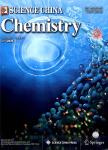Aggregation-induced emission-based covalent-organic framework fluorescent probes for clinical detection of aluminum and daily prevention of Alzheimer's disease by naked-eye
作者机构:Key Laboratory of Polyoxometalate and Reticular Material Chemistry of Ministry of Education and Faculty of ChemistryNortheast Normal University School of Chemistry and Materials Science Jiangsu Key Laboratory of New Power Batteries Jiangsu Collaborative Innovation Center of Biomedical Functional Materials Nanjing Normal University Key Laboratory of Automobile Materials of Ministry of Education & School of Materials Science and Engineering Jilin University
出 版 物:《Science China Chemistry》 (中国科学:化学(英文版))
年 卷 期:2024年
核心收录:
学科分类:081704[工学-应用化学] 1002[医学-临床医学] 07[理学] 08[工学] 0817[工学-化学工程与技术] 070302[理学-分析化学] 100203[医学-老年医学] 0703[理学-化学] 10[医学]
基 金:financially supported by the National Key R&D Program of China (2022YFB3805902) the National Natural Science Foundation of China (22131004, U21A20330, 21975039 and 22077118) the “111’’ project (B18012) the Fundamental Research Funds for the Central Universities, Excellent Youth Team Program (2412023YQ001) the Finance Special Project on Medical and Health Talents of the Finance Department of Jilin Province (JLSWSRCZX2023-52) WBE Liver Fibrosis Foundation (2020009)
摘 要:Alzheimer s disease(AD) is a neurodegenerative disease and a major threat to human health worldwide. The association between aluminum exposure and AD has been widely reported. Owing to the ubiquitous presence of aluminum in daily life, aluminum exposure can easily occur whenever and wherever possible. Thus, a rapid and sensitive reagent for detecting aluminum and assist in AD daily prevention for potential AD patient population is extremely needed. However, existing aluminum detection methods rely on precise instruments, which are impractical for household use. Herein, a series of aggregation-induced emission-based covalent-organic framework(AIE-COF) fluorescent probes has been designed with progressively tuned sizes and screened for aluminum detection. Among them, COF-N2 was found to have the highest response towards aluminum specifically, with a fluorescence intensity change of 19.14 times before and after chelation, which could determine the aluminum concentration by naked eye. Then, the molecular mechanism of COF-N2 fluorescence changes was explained and COF-N2 was used for both diagnose the aluminum distribution in various organs of APP/PS1 transgenic mice and quickly determine the aluminum content in daily necessities. The use of AIE-COF probes for aluminum detection provides a promising avenue for developing aluminum related AD clinical diagnosis and daily prevention tools.



